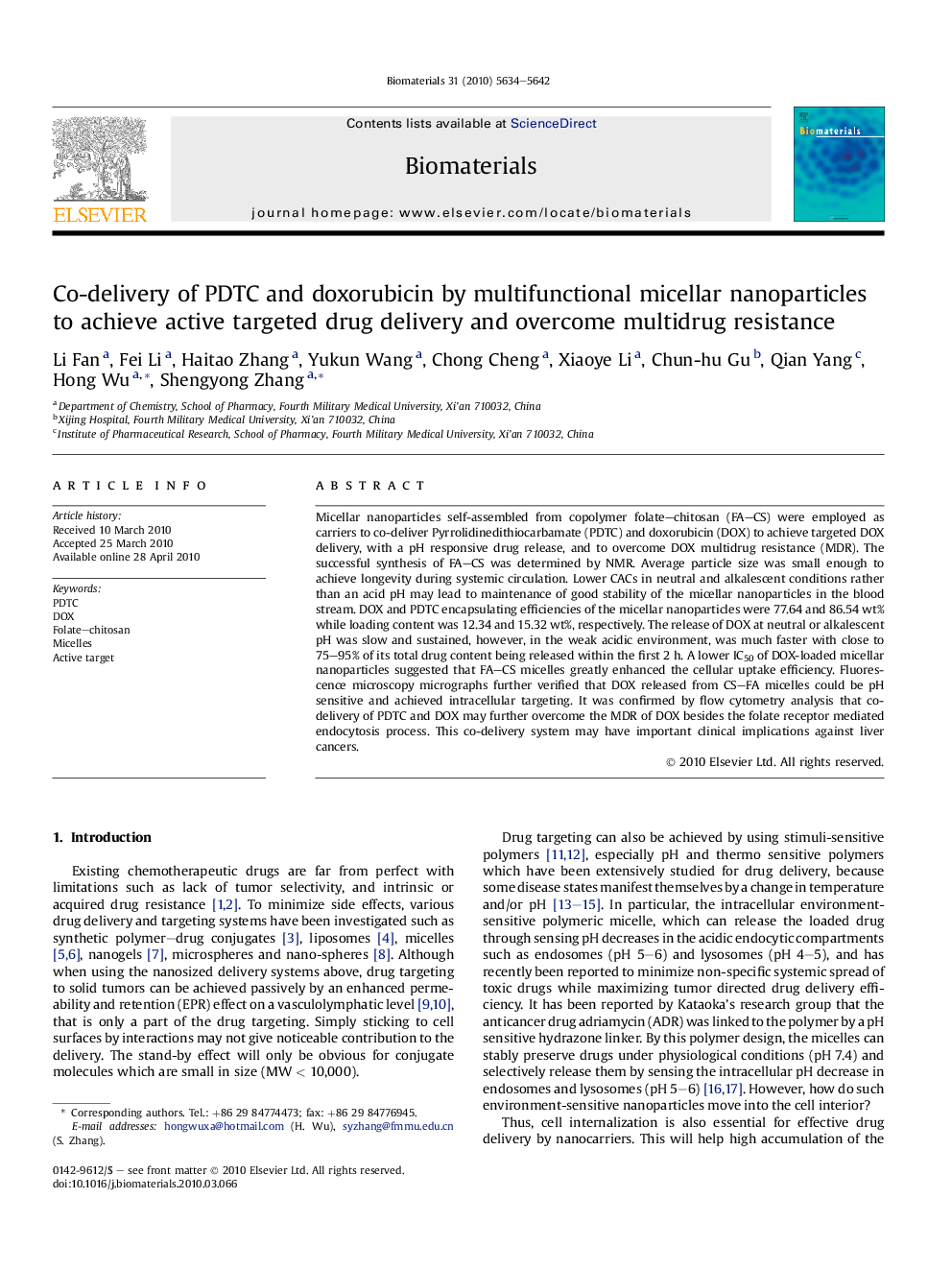| Article ID | Journal | Published Year | Pages | File Type |
|---|---|---|---|---|
| 9509 | Biomaterials | 2010 | 9 Pages |
Micellar nanoparticles self-assembled from copolymer folate–chitosan (FA–CS) were employed as carriers to co-deliver Pyrrolidinedithiocarbamate (PDTC) and doxorubicin (DOX) to achieve targeted DOX delivery, with a pH responsive drug release, and to overcome DOX multidrug resistance (MDR). The successful synthesis of FA–CS was determined by NMR. Average particle size was small enough to achieve longevity during systemic circulation. Lower CACs in neutral and alkalescent conditions rather than an acid pH may lead to maintenance of good stability of the micellar nanoparticles in the blood stream. DOX and PDTC encapsulating efficiencies of the micellar nanoparticles were 77.64 and 86.54 wt% while loading content was 12.34 and 15.32 wt%, respectively. The release of DOX at neutral or alkalescent pH was slow and sustained, however, in the weak acidic environment, was much faster with close to 75–95% of its total drug content being released within the first 2 h. A lower IC50 of DOX-loaded micellar nanoparticles suggested that FA–CS micelles greatly enhanced the cellular uptake efficiency. Fluorescence microscopy micrographs further verified that DOX released from CS–FA micelles could be pH sensitive and achieved intracellular targeting. It was confirmed by flow cytometry analysis that co-delivery of PDTC and DOX may further overcome the MDR of DOX besides the folate receptor mediated endocytosis process. This co-delivery system may have important clinical implications against liver cancers.
